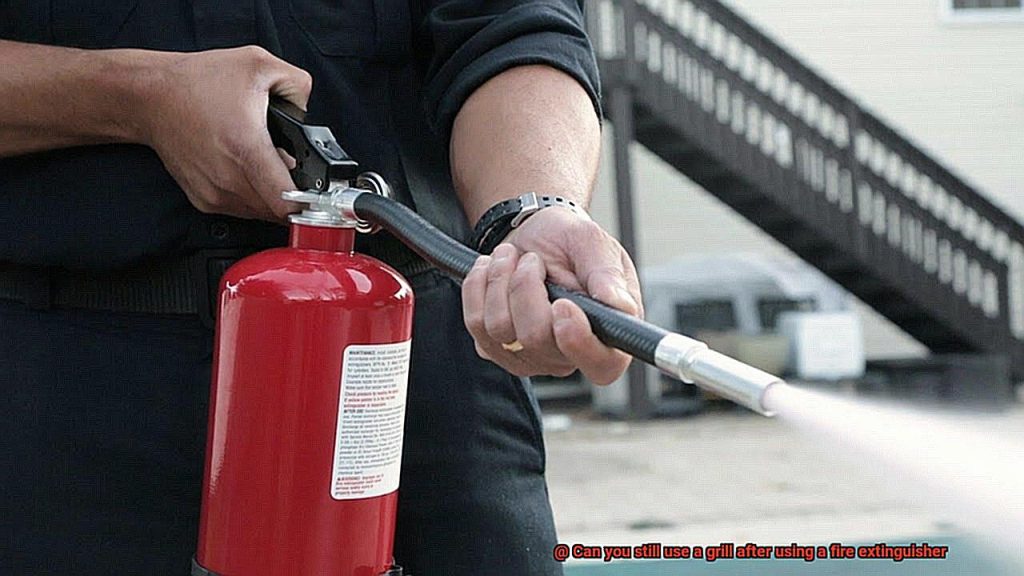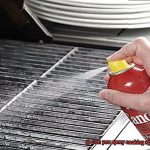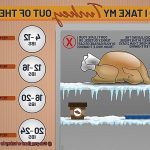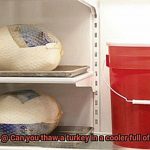Summertime grilling is a beloved activity for many of us, with the tantalizing aroma of cooking meats and veggies on the grill. But accidents can happen, and before you know it, your laid-back evening can turn into chaos. A grease fire might erupt, causing you to reach for the nearest fire extinguisher in a panic. However, this raises an important question: Can you still use a grill after using a fire extinguisher?
Unfortunately, the answer isn’t so simple. If you’ve used a fire extinguisher on your grill, it’s not just a matter of wiping off some ash and getting back to business as usual. Fire extinguishers leave behind chemicals and residue that can be harmful to your health and contaminate your food. So before you start grilling again, there are some crucial steps you need to take.
In this blog post, we’ll delve into the effects of using a fire extinguisher on your grill and what precautions you should take before using it again. We’ll also explore different types of fire extinguishers and how to handle grease fires safely on your grill. So grab yourself a cold beverage, sit back, and let’s get started on everything you need to know about using a grill after deploying a fire extinguisher.
Contents
What Type of Fire Extinguisher Should You Use?
Summer is here, and with it comes the beloved tradition of outdoor grilling. But with grilling also comes the risk of fires, making it crucial to have a fire extinguisher on hand. However, using the wrong type of extinguisher can make the situation worse, so it’s essential to know which type to use for different types of fires.
There are five classes of fires, each requiring a specific type of extinguisher.
- Class A fires involve ordinary combustibles like wood, paper, or cloth. To put out these flames, use a water or foam extinguisher. These extinguishers cool the fire and remove oxygen from the fuel source.
- Class B fires involve flammable liquids such as gasoline or oil. For these types of fires, use a dry chemical or carbon dioxide extinguisher. Dry chemical extinguishers interrupt the chemical reaction of the fire, while carbon dioxide extinguishers displace oxygen from the fire.
- Class C fires involve electrical equipment like appliances or wiring. Use an extinguisher that will not conduct electricity, such as a carbon dioxide or dry chemical extinguisher. These types of extinguishers smother the fire and remove its oxygen source.
- Class D fires involve combustible metals such as magnesium or sodium. Specialized dry powder extinguishers are needed for these types of fires. These extinguishers create a crust over the metal to prevent it from reacting with oxygen in the air.
- Lastly, Class K fires involve cooking oils and fats commonly found in commercial kitchens. Wet chemical extinguishers are needed for these types of fires because they can effectively cool the oil while creating a barrier between the oil and air to prevent re-ignition.
Using the correct type of fire extinguisher is crucial because using the wrong one can make the situation worse and more dangerous. Therefore, before using a fire extinguisher on a grill fire, make sure you have the appropriate type for the type of fire you’re dealing with.
Cleaning After Using a Dry Chemical Fire Extinguisher
Using a dry chemical fire extinguisher can leave behind a residue that can be damaging if not cleaned up properly. Don’t worry, though. As an expert in this area, I’m here to guide you through the steps to clean up your grill after using a dry chemical fire extinguisher.
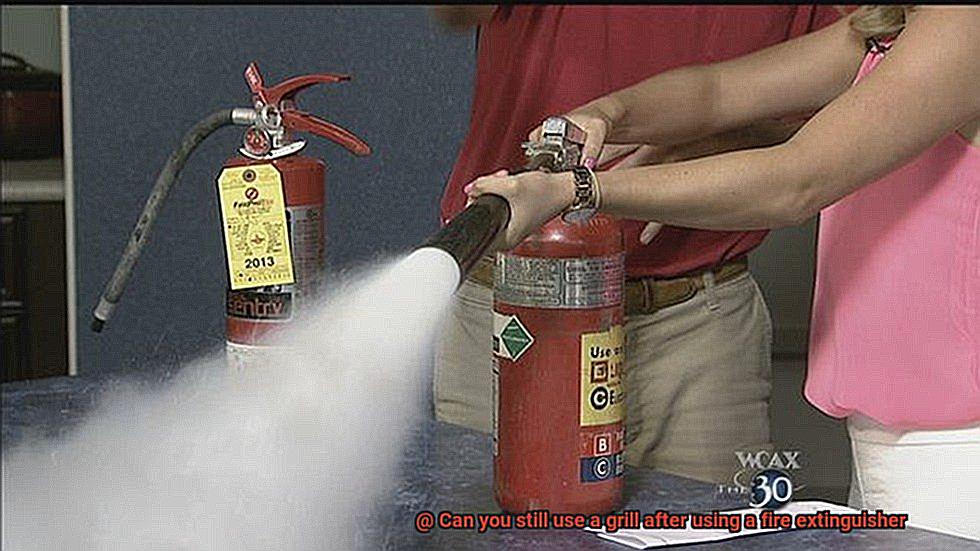
Step 1: Wait it out
Before diving in, make sure to wait until your grill has completely cooled down. Safety first. You don’t want to risk burning yourself or inhaling any harmful particles.
Step 2: Brush or vacuum
Once it’s safe to do so, use a brush or vacuum to remove as much of the dry chemical residue as possible. This step is crucial as it will prevent the residue from corroding your grill’s interior.
Step 3: Wipe down
After removing the majority of the residue, use a damp cloth or sponge to wipe down the grill grates and interior surfaces. Avoid using too much water, which can cause rust and other damage to your grill. Instead, use a mild dish soap solution or baking soda paste to help remove any remaining residue.
Step 4: Rinse and dry
Once you’re done cleaning, rinse the grill thoroughly with water and dry it off with a towel or let it air dry. It’s important to check the grease tray and remove any dry chemical residue that may have accumulated there.
Cleaning After Using a Carbon Dioxide or Water-Based Fire Extinguisher
The type of extinguisher used can make a significant impact on the cleaning process. Let’s dive into the differences between cleaning a grill after using a carbon dioxide or water-based fire extinguisher.
Carbon dioxide fire extinguishers are often used for grilling accidents because they can put out fires without damaging the grill’s components. However, carbon dioxide can cause frostbite, so it’s crucial to wait for the grill to cool down completely before cleaning it.
Once it’s cool, remove any loose debris or ash from the grill and use a damp cloth or sponge to wipe down the interior and exterior. To avoid frostbite, it’s important to wear gloves during this process. After cleaning, rinse the grill with water and dry it thoroughly before using it again.
Water-based fire extinguishers are also commonly used for grilling accidents but require a different cleaning method. Using too much water can cause rusting and corrosion, so it’s important to absorb as much excess water as possible with a dry cloth or paper towel before cleaning. Next, create a mild detergent and warm water solution to wipe down the interior and exterior of the grill. Finally, rinse the grill with water and dry it thoroughly before using it again.
It’s crucial to maintain your grill’s functionality and safety by cleaning it properly after using a fire extinguisher. For those who are unsure how to clean their grill, consulting a professional or referring to the manufacturer’s instructions is recommended. Don’t let a grilling accident ruin your summer fun – be prepared and know how to clean your grill after using a fire extinguisher.
Tips for Safe Grilling Practices
Grilling is a favorite pastime for many, but it can quickly become dangerous if safety measures are not taken seriously. In addition to keeping the grill in good condition and away from flammable materials, using a fire extinguisher and proper cleaning techniques are crucial for safe grilling practices. Let’s explore the importance of these measures in more detail.
The Importance of a Fire Extinguisher
A fire extinguisher is an essential tool for any griller, as it can help put out a fire quickly and prevent it from spreading. However, simply having a fire extinguisher nearby is not enough – it must be in good working condition and easily accessible. Knowing how to use a fire extinguisher before an emergency occurs is also crucial, as fumbling with the device during an emergency can waste precious time. The PASS method (Pull, Aim, Squeeze, Sweep) is an easy way to remember how to use a fire extinguisher effectively.
Proper Cleaning Techniques
Using a fire extinguisher can leave behind harmful chemicals that can contaminate the grill grates and food. Properly cleaning the grill after using a fire extinguisher is crucial for safe grilling practices. Start by turning off the gas or disconnecting any electrical connections before removing the grates.
Scrub them with warm soapy water and a brush to remove any remaining residue, and use a wet-dry vacuum or damp cloth to wipe away any remaining powder or residue from the grill’s interior. Rinse everything with water and let it air dry before reassembling.
Inspecting the Grill
Regularly inspecting the grill for potential hazards can prevent accidents from occurring. Check for gas leaks and ensure all connections are secure before using the grill each time. Inspect the cooking grates for any signs of damage or rust, which can weaken them over time and cause them to break under pressure.
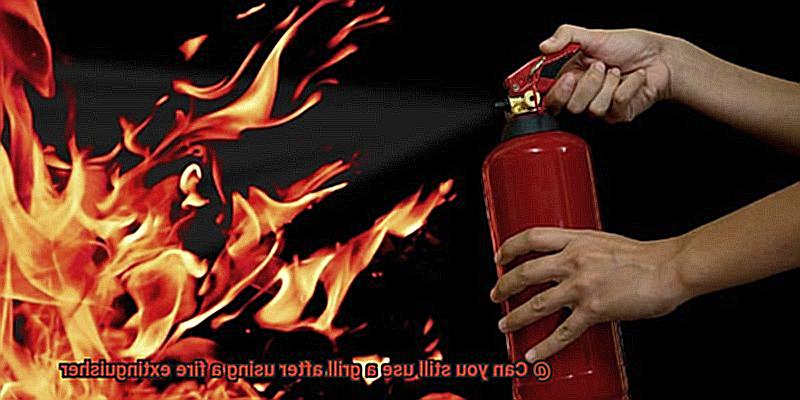
Keeping the Grill in a Safe Area
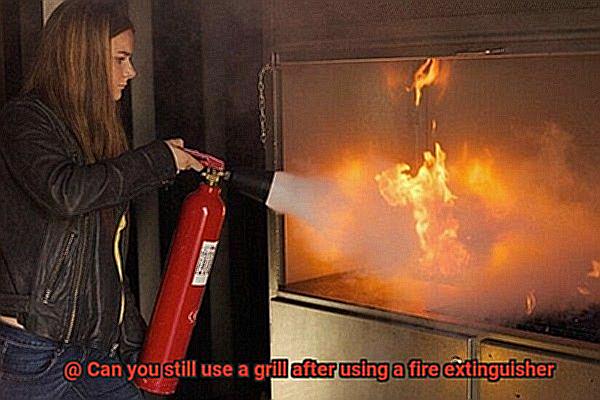
It’s essential to keep the grill in a safe area with plenty of ventilation and away from any flammable materials. This includes keeping the grill away from trees, bushes, and other plants that could catch fire. Never leave the grill unattended while cooking, and always keep a watchful eye on the food as it cooks.
Checking the Propane Tank
Checking the propane tank for leaks and ensuring the burner tubes are clean and free of debris is crucial for safe grilling practices. A propane leak can be hazardous and cause an explosion, while clogged burner tubes can cause a fire to flare up unexpectedly.
The Safety Benefits of Having a Fire Extinguisher on Hand
Grilling is an enjoyable experience that brings families and friends together. However, it’s crucial to prioritize safety while grilling to avoid any potential hazards. One of the essential tools for ensuring grill safety is a fire extinguisher. Having a fire extinguisher on hand can help prevent small fires from turning into large ones, potentially causing serious harm or damage.
There are many benefits to having a fire extinguisher within arms reach while grilling. Firstly, it can quickly put out small fires before they become too big to handle. This is especially crucial when dealing with grease fires that can quickly get out of control and cause significant damage.
Moreover, having a fire extinguisher on hand provides peace of mind for the person grilling. Knowing that you have the ability to quickly and effectively put out any potential fires can allow you to focus on cooking without worrying about the risk of a fire.
It’s also important to note that having a fire extinguisher on hand is not just beneficial for the person doing the grilling but also for those around them. If a fire were to break out and spread, it could potentially harm nearby individuals or property. Having a fire extinguisher readily available can help prevent this from happening and protect those around you.
Common Causes of Grill Fires and How to Avoid Them
It’s crucial to be aware of the common causes of grill fires and how to avoid them to keep yourself and your loved ones safe. As an expert on this topic, I’ve compiled some research notes to help you stay safe while enjoying your favorite grilled foods.
One of the most prevalent causes of grill fires is grease buildup. Grease can accumulate on the grates and other parts of the grill, leading to a potential blaze. Therefore, it’s essential to keep your grill clean by regularly removing any grease buildup. Not only will this reduce your risk of a fire, but it will also enhance the taste of your food.
Another common cause of grill fires is the misuse of lighter fluid. Using too much lighter fluid or pouring it directly onto hot coals can cause an explosive fire. To avoid this, always use the recommended amount of lighter fluid and never pour it directly onto hot coals. Additionally, make sure to wait for the coals to cool down before disposing of them properly.
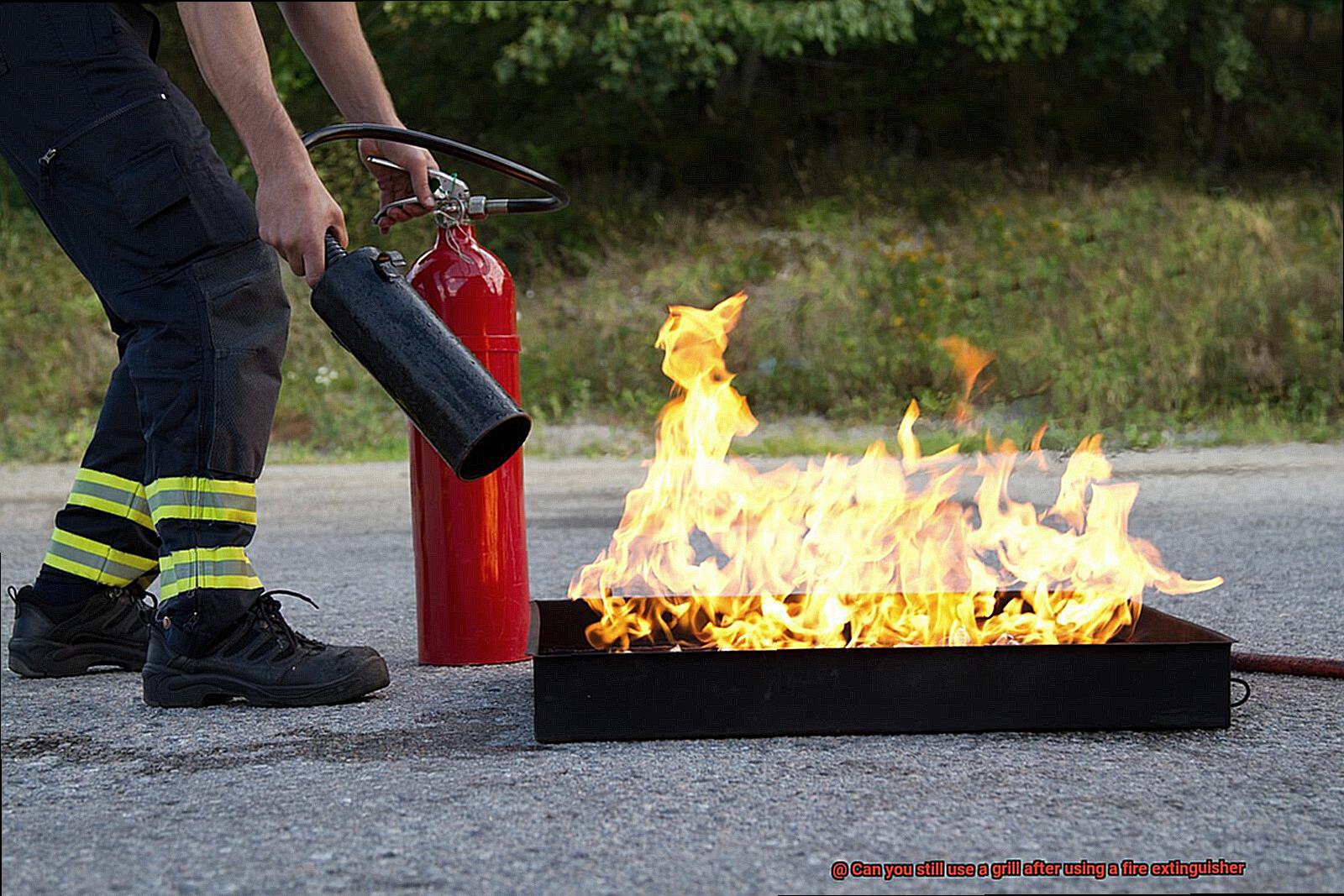
It’s also critical to place your grill at least 10 feet away from any flammable objects such as trees, bushes, or buildings. This helps prevent accidental fires from occurring due to embers blowing onto nearby objects.
Furthermore, never leave your grill unattended while it’s hot. Leaving a hot grill unattended can lead to a fire if something falls onto the grill or if the wind blows embers onto nearby flammable objects. To prevent this from happening, always keep a close eye on your grill while cooking, and never leave it unattended until it has cooled down completely.
The Different Types of Fire Extinguishers and Their Uses
Fire safety is an essential aspect of any workplace or home, and having a fire extinguisher on hand can make a significant difference in case of an emergency. However, did you know that there are different types of fire extinguishers for different types of fires? Let’s dive in and explore the different types of fire extinguishers and their uses.
Class A Fire Extinguishers
Class A fire extinguishers are designed to put out fires caused by ordinary combustibles such as wood, paper, cloth, and plastic. These types of extinguishers contain water or dry chemicals. They work by cooling the fire and removing the oxygen from it, which helps to prevent re-ignition.
In situations where a Class A fire occurs, it’s crucial to remember that water can be an effective alternative to chemical extinguishers. Water can quickly cool the fuel source and smother the flames, reducing the risk of further damage.
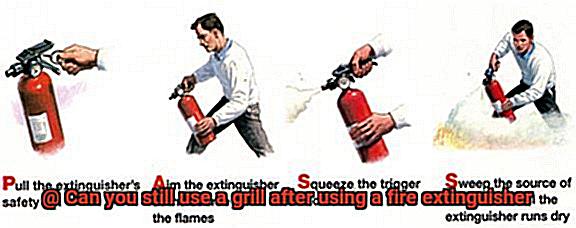
Class B Fire Extinguishers
Class B fire extinguishers are used for flammable liquids such as gasoline, oil, and grease. They contain dry chemicals such as sodium bicarbonate or monoammonium phosphate. These chemicals smother the fire by creating a barrier between the fuel source and the oxygen.
When using Class B fire extinguishers, it’s important to keep in mind that these chemicals can create a mess that may require professional cleaning services. Therefore, it’s crucial to use them only when necessary, ensuring that you follow proper safety procedures.
Class C Fire Extinguishers
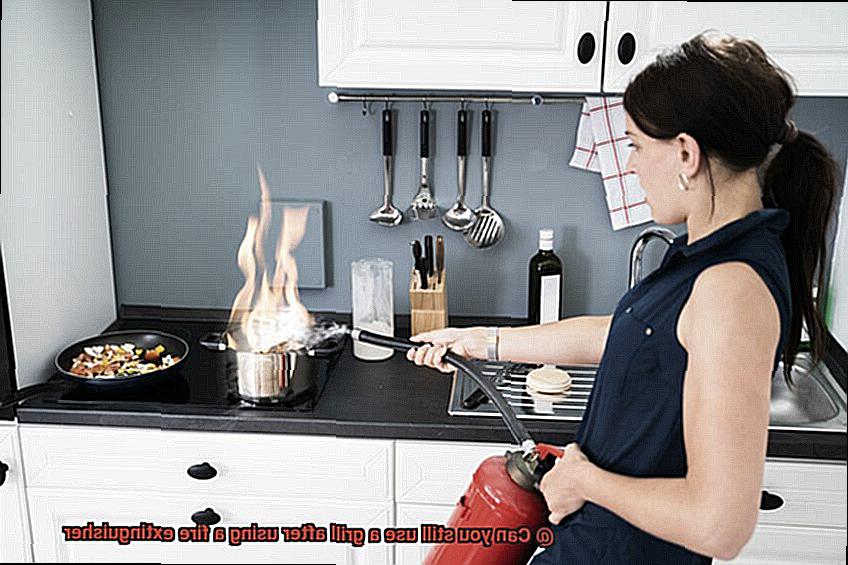
Class C fire extinguishers are used for electrical fires. They contain non-conductive agents such as carbon dioxide or halon. These agents do not conduct electricity and do not leave any residue that could damage sensitive equipment.
When using Class C fire extinguishers, it’s important to switch off the electrical power source before using them to avoid electrocution. Also, it’s essential to remember that if the electrical power source cannot be switched off, it is best to evacuate the premises and call the fire department.
Class D Fire Extinguishers
Class D fire extinguishers are designed for fires involving flammable metals such as magnesium, titanium, and sodium. They contain dry powder agents such as sodium chloride or graphite. These agents work by smothering the fire and preventing oxygen from reaching the fuel source.
When using Class D fire extinguishers, it’s important to ensure that they are suitable for the specific type of metal involved in the fire. Using the wrong type of extinguisher can result in a dangerous reaction that could make the situation worse.
Class K Fire Extinguishers
Class K fire extinguishers are used for cooking fires involving oils and fats. They contain wet chemicals that react with the cooking oil to form a foam that cools the oil and prevents re-ignition. These extinguishers are typically found in commercial kitchens.
What to Do in the Event of a Grill Fire
There’s nothing quite like the thrill of grilling up some delicious food during the summer months. However, if a fire breaks out on your grill, it’s important to know what to do to protect yourself and those around you. Here are six steps to take in the event of a grill fire.
Step 1: Safety first.
Turn off the gas or fuel source to the grill immediately. This will stop any additional fuel from feeding the flames and potentially making the fire even worse.
Step 2: Assess the size of the fire.
If it’s small and manageable, grab a fire extinguisher that is appropriate for outdoor fires and put out the flames. Be sure to aim the extinguisher at the base of the fire.
Step 3: If the fire is too large or spreading quickly, evacuate the area immediately and call 911 for assistance.
Do not attempt to put out a large fire on your own.
Step 4: Once the fire has been extinguished, give your grill time to cool down completely before touching it.
This will ensure that you don’t accidentally burn yourself.
Step 5: Inspect your grill for any signs of damage or residue left behind by the fire extinguisher.
Using a fire extinguisher can leave behind harmful chemicals, so it’s important to check for any residue and clean it thoroughly before using your grill again.
Step 6: Check all components of your grill, such as hoses and valves, for any signs of damage.
If anything has been compromised by the fire, replace it before using your grill again.
sThEIz6_qlU” >
Conclusion
After using a fire extinguisher on your grill, it’s important to take the necessary steps before firing it up again.
While it may seem like a quick fix to simply spray and go, the chemicals from the extinguisher can leave behind residue that could be harmful if ingested. To ensure safety, thoroughly clean and inspect your grill before using it again.
This includes removing any ash or debris from the firebox, scrubbing the grates with soap and water, and checking for any damage or corrosion.

